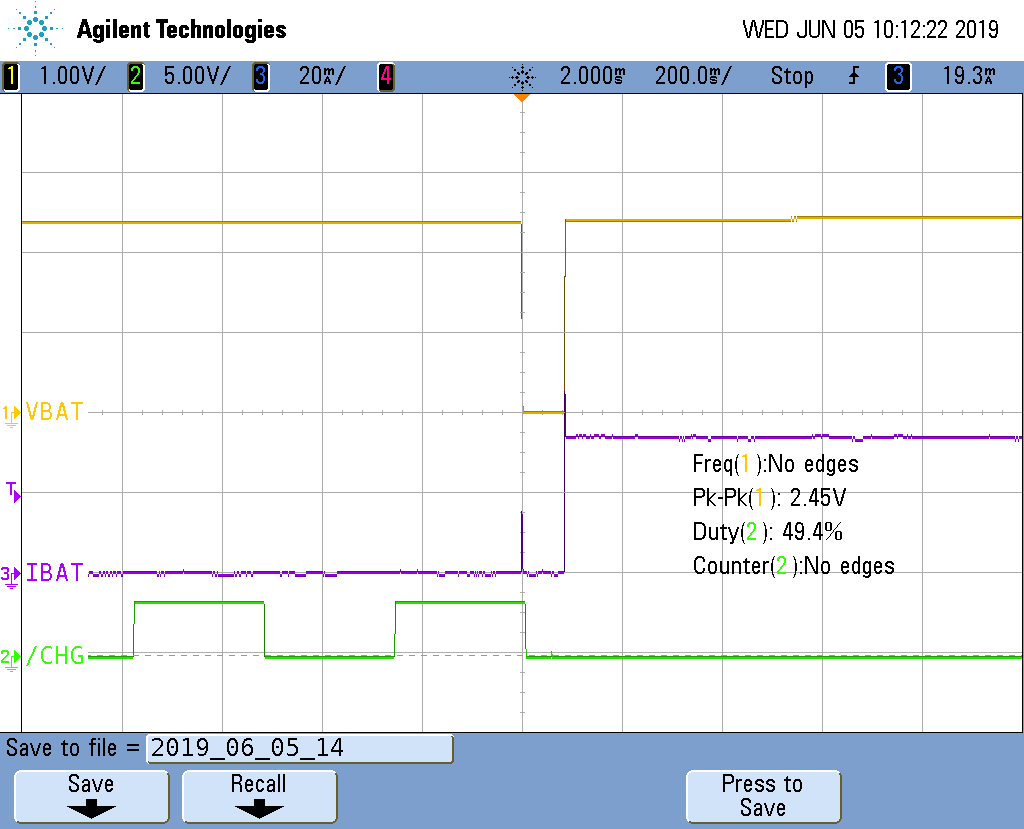Other Parts Discussed in Thread: BQ24230
I am working to test the precharge safety timer on our BQ24232. The fast charge safety timer works as expected, and cuts off the charge current if the timer elapses. Currently I have an RTMR of 20 k-ohms, which translates to a nominal fast charge timeout of 160 mins. My test setup has the BQ24232 powered from a DC power supply, and a programmable load set to constant voltage mode hooked up to the BAT pins.
I have the load set to a voltage of 2.4 V. The charger seems to be in precharge because the charge current in this case is ~30 mA, and if I were to increase the voltage programmed across the load above 3 V, the charge current switches to the programmed fast charge current.
Given the 20 k-ohm timer programming resistor, the precharge safety timer should trigger after 16 mins. However, I have let it run for 4+ hours, and the precharge current never changes.
Any ideas for why the precharge timer is not kicking in, and for how I could debug it? Any ideas at all would be greatly appreciated.



